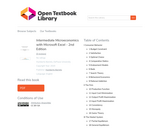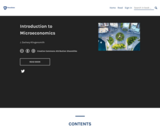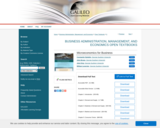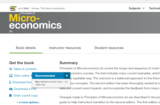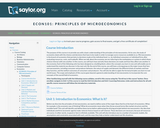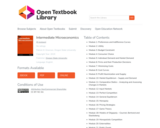
Intermediate Microeconomics is a comprehensive microeconomic theory text that uses real world policy questions to motivate and illustrate the material in each chapter. Intermediate Microeconomics is an approachable yet rigorous textbook that covers the entire scope of traditional microeconomic theory and includes two mathematical approaches, allowing instructors to teach the material with or without calculus. With real-world policy topics as an entree into each subject, Intermediate Microeconomics will help students engage with the material and facilitate learning not only the concepts, but their importance and application as well.
Table of Contents
Module 1: Preferences and Indifference Curves
Module 2: Utility
Module 3: Budget Constraint
Module 4: Consumer Choice
Module 5: Individual Demand and Market Demand
Module 6: Firms and their Production Decisions
Module 7: Minimizing Costs
Module 8: Cost Curves
Module 9: Profit Maximization and Supply
Module 10: Market Equilibrium – Supply and Demand
Module 11: Comparative Statics - Analyzing and Assessing Changes in Markets
Module 12: Input Markets
Module 13: Perfect Competition
Module 14: General Equilibrium
Module 15: Monopoly
Module 16: Pricing Strategies
Module 17: Game Theory
Module 18: Models of Oligopoly – Cournot, Bertrand and Stackleberg
Module 19: Monopolistic Competition
Module 20: Externalities
Module 21: Public Goods
Module 22: Asymmetric Information
Module 23: Uncertainty and Risk
Module 24: Time – Money Now or Later
- Subject:
- Economics
- Social Science
- Material Type:
- Textbook
- Author:
- About The Contributors
- Date Added:
- 02/09/2021

